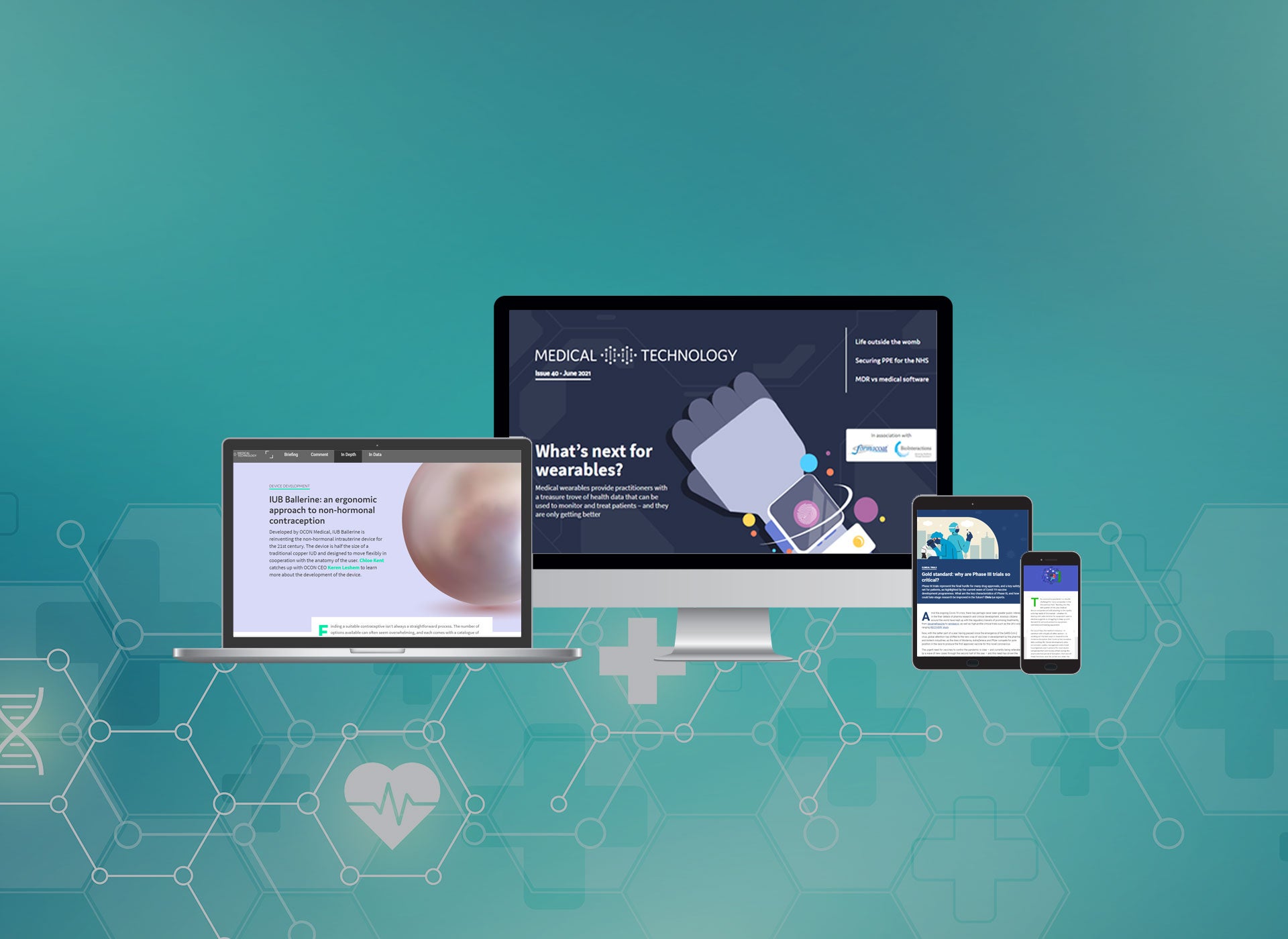
Medical Technology is now available on all devices. Read it for free here.
The European Union’s new Medical Device Regulation (MDR) has finally come into force, with all medical devices now required to adhere to a new set of rules and requirements before they can be sold or imported into the region.
While the MDR has been a long time – almost ten years – in the making, that doesn’t mean that device manufacturers will be fully prepared for how the transition may change their operations. As the new rules expand the definition of a medical device, software developers may find that their product now falls under the scope of MDR.
To find out more, we speak to international law firm Morrison & Foerster to discuss the changes coming into play for medical device software as the MDR is rolled out, from intended use and risk classification to the complexities of unique device identification.
Elsewhere, we get to grips with the next generation of medical wearables, find out how an AI-powered healthcare marketplace is helping the NHS to secure PPE supplies and examine the ethical issues surrounding the use of mechanical wombs to artificially gestate human embryos.
All this and more in this latest issue of Medical Technology.
In this issue
How will Europe’s new device regulations affect medical software?
What are the implications for medical device software, following the rollout of the EU’s new Medical Device Regulation last month? Chloe Kent sits down with international law firm Morrison & Foerster partner Dr Wolfgang Schönig to discuss the changes coming into play for MDSW as the MDR is rolled out, from intended use and risk classification to the complexities of unique device identification.
Read the article here.
The next phase for medical wearables
Wearable technologies are already beginning to revolutionise medical care, with a host of devices now capable of monitoring an ever-growing array of vital signs and biomarkers. But how can this data be used? Abi Millar talks to Dr David Nickelson, VP of healthcare at digital health consultancy Nerdery, to find out more about the next steps for wearable tech in the medical field.
Read the article here.
How to future-proof the NHS supply chain
PPE became headline news last year due to the high demand – and short supply – of vital hospital equipment. To prevent future shortages, a team of researchers from the University of Sheffield have teamed up with Vamstar to develop an AI-powered healthcare marketplace to help NHS buyers evaluate the credibility and capability of suppliers. Natalie Healey finds out more about the project.
Read the article here.
IUB Ballerine: an ergonomic approach to non-hormonal contraception
Developed by OCON Medical, IUB Ballerine is reinventing the non-hormonal intrauterine device for the 21st century. The device is half the size of a traditional copper IUD and designed to move flexibly in cooperation with the anatomy of the user. Chloe Kent catches up with OCON CEO Keren Leshem to learn more about the development of the device.
Read the article here.
Creating connections with Within3
Within3 is a social networking platform built to improve active engagement across life science companies, set up to bring healthcare professionals within three connections of each other. Abi Millar speaks to Within3 CEO Lance Hill about how the company is ushering in a new era of collaboration in the medical industry.
Read the article here.
A womb with a view: the ethical dilemma of ectogenesis
Until now, foetuses have always needed a living uterus to develop and grow, but a number of research projects across the world indicate that one day this might not be the case. While this research is in its infancy, it could potentially transform the future of human fertility treatments. Chloe Kent finds out more about life inside the mechanical womb and explores its ethical implications.
Read the article here.
Next issue preview
While public perception may suggest that Big Pharma holds the top spot when it comes to making payments to physicians, a recent study found that the US medical device industry actually outspends pharmaceuticals in this area. In the next issue of Medical Technology, we find out more about the payments flowing to physicians from medical device firms and how industry-physician relationships might be better managed in the future.
Also, we ask if wearable devices will ever be able to accurately measure blood pressure to a clinical standard and examine a new deal between NHS England and the private hospital sector that is designed to help clear the huge backlog of non-emergency procedures called off at the height of the Covid-19 pandemic.
Plus, we talk to Sky Medical Technology about post-pandemic innovation in healthcare, debate whether a growing range of consumer health tech is encouraging more patients to self-diagnose conditions that may require professional assessment, and examine ways that innovative technology is changing the way that prospective surgeons are trained.



